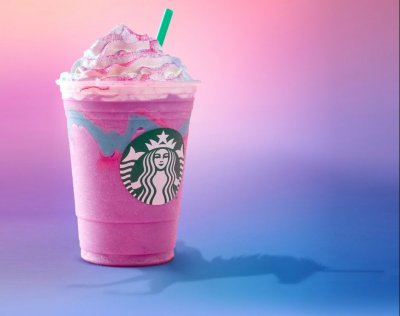
Over the past seven days Starbucks brilliantly captured millions of dollars in free publicity with its version of a morning show stunt. You could hardly find a late-night TV monologue, or a Facebook community, that didn’t include some comment about the Unicorn Frappuccino.
Why would Starbucks create a drink that, according to most reviews, tasted like sour birthday cake - and then only make it available for three days? It’s all about the buzz. And I can’t think of an industry or product that benefits more from “buzz” than a radio station and/or its morning show.
Oddly, though, stunting seems to have declined at radio – at least radio in the U.S. – over the last few years. One reason may be large, risk-averse companies shying away from the potential for things to go wrong; the Sacramento “how much water can you drink?” tragedy being the best and saddest example. Another might be the current focus on “real life” morning show content. A third might be programmers who feel stunts are not appealing to adults.
For an industry that manufactures an invisible product and which is generally starved for marketing resources, events that make people talk about your radio station can be golden. Most stunts that are well thought-out rarely go awry. Listeners want to be entertained and distracted from real life. And as far back as the 1950s, when Steve Allen became the first host of the Tonight Show, stunts have been shown to be appealing to adults.
Steve Allen was David Letterman’s hero and inspiration. Much of Letterman’s crazy stuff was simply a redo of a Steve Allen bit; for example, Letterman being dunked in a water tank while wearing a suit made of Alka-Seltzers came directly from Steve Allen being a “human tea bag” on the Tonight Show.
And radio has had its share of great stunts, like the Turkey Drop or living on a billboard until ___ happens (the Orioles win, etc). Mojo in Detroit and Elvis Duran at Z100 still employ them effectively.
If Top 40-style stunts don’t feel right for your station, remember that “wild and crazy” isn’t the end of remarkable content. There are stunts and events that make people talk about you by making them feel good, or by pleasantly surprising them in unique ways. Canadian, Australian, and many European stations seem to be particularly adept at this; for example, watch this terrific video of an Australian wedding promotion all the way to the big surprise. Or this great idea from a Danish classical music station.
There are also very effective promotions that generate buzz. Two great examples are Paige Nienabers’ “Fugitive” contest, and a Canadian promotion that required contestants to live in bright, solid-color body stockings 24/7.
Keep in mind also that you don’t always have to go outside the walls of the radio station to create word of mouth. Great, unusual content – whether visible or not – makes people talk about you.
One last reason some stations or shows might not do “remarkables” is the feeling that in a PPM world, recall or buzz don’t matter – only tune-ins matter. If that’s you, you might ask yourself: Starbucks is marketed brilliantly, generally, and if a tangible product sold at cash registers (the ultimate measurement) thinks buzz is important, what does that say about the need for buzz about an invisible product with lots of competition – that is, radio?
As has often been said, great radio stations surprise and delight their audiences. Where’s your Unicorn Frappuccino?
